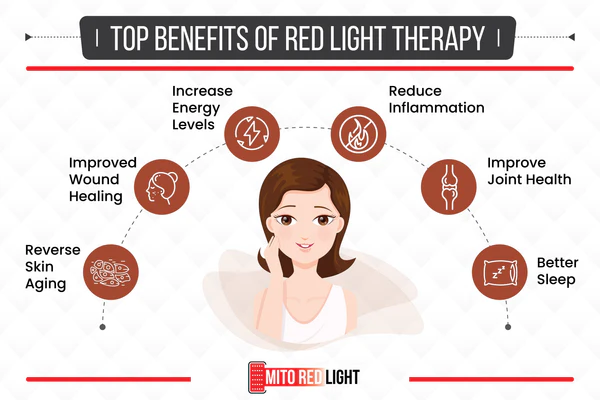“Acknowledging the good that you already have in your life is the foundation for all abundance.” -Eckhart Tolle
Tis the season of gratitude, abundance, and giving! How do you find these practices in your life? How can you spread them to your loved ones this holiday season?
We are very excited to announce a Women’s Winter Wellness Weekend hosted by Allison, February 23-25, 2024. We will gather for yoga & meditation practices, sharing circles, circadian health & longevity practices, sisterhood connection, and much more. Get ready to learn, grow, connect, and get comfortable with the uncomfortable! You can learn more and find the application here.
This Month’s Resources
Red & Near Infrared Light
Red light therapy is a type of therapy using red and infrared wavelengths of light to stimulate your cells. Red and near-infrared light are part of the electromagnetic spectrum, and more specifically, part of the spectrum of light emitted by the sun. These wavelengths of light are “bioactive” in humans.
Red light therapy is also sometimes called photobiomodulation or low-level light therapy. The pioneering work of Danish physician Niels Finsen established the foundation for the medical use of light-based therapies. Finsen won a Nobel Prize in 1903 for his use of phototherapy in treating lupus and smallpox, laying the initial groundwork for photobiomodulation research.
The benefits of red light: Red light between 600-700nm offer benefits for skin texture and tone, smoothing fine lines and wrinkles, promoting collagen production and generally rejuvenating the appearance of skin and hair.
The benefits of near-infrared light: Near-infrared light (NIR) 700nm – 1100nm. penetrates deeper into the tissues to assist with wound healing, muscle recovery, nerve injury and joint pain.
How does it Work?
Red light boosts cellular energy production.
The most well studied mechanism of action surrounding red and near infrared light therapy is increased mitochondrial energy production in the cells. Mitochondria are tiny organelles that are the energy power plants of all the cells in our body. Red and near infrared light therapy helps the mitochondria create more of that energy.
The specific photons found in red and near infrared light interact with a photoreceptors within our cells called cytochrome c oxidase. This interaction stimulates the mitochondria in our cells to use oxygen more efficiently, which allows the mitochondria to produce more ATP (adenosine triphosphate). Adenosine triphosphate is a complex organic chemical that provides energy to drive many processes in living cells, e.g. muscle contraction, nerve impulse propagation, and chemical synthesis. Found in all forms of life, ATP is often referred to as the “molecular unit of currency” of intracellular energy transfer. When our cells have more energy, they simply perform better and the body follows suit!
We also found 2 great studies from the National Library of Medicine. The first one found that Transcranial Near Infrared Light Stimulations Improve Cognition in Patients with Dementia. The second one was A Controlled Trial to Determine the Efficacy of Red and Near-Infrared Light Treatment in Patient Satisfaction, Reduction of Fine Lines, Wrinkles, Skin Roughness, and Intradermal Collagen Density Increase. To learn more about red light therapy, Mito Red Light has an incredible blog with many great articles going into more details on the different benefits red light therapy can provide. The Optimal Wellness team uses the MitoPro 300+. We have fallen in love with this light so much that we were lucky enough to receive an affiliate code for 5% off purchases! Click this link and use AY108 and let us know how we can help!
The Season of Giving
If anyone has some extra $ this year and is able to donate to a project our friend and neighbor is working on, it would mean the world to her! She has a non-profit organization and is helping kids and families in the Massaia Tribe in Kenya, Africa.
Necessary to life is water. Due to a severe drought in Kenya, the villages and schools have limited access to drinkable water unless they travel up to 20 miles. There are times they go 3 days without water. The ultimate goal is putting in a well with drinkable water near the school! To learn more click here or contact shngrn55@gmail.com.



